Porphyromonas gingivalis aggravates colitis via a gut microbiota-linoleic acid metabolism-Th17/Treg cell balance axis
- PMID: 38388542
- PMCID: PMC10883948
- DOI: 10.1038/s41467-024-45473-y
Porphyromonas gingivalis aggravates colitis via a gut microbiota-linoleic acid metabolism-Th17/Treg cell balance axis
Abstract
Periodontitis is closely related to inflammatory bowel disease (IBD). An excessive and non-self-limiting immune response to the dysbiotic microbiome characterizes the two. However, the underlying mechanisms that overlap still need to be clarified. We demonstrate that the critical periodontal pathogen Porphyromonas gingivalis (Pg) aggravates intestinal inflammation and Th17/Treg cell imbalance in a gut microbiota-dependent manner. Specifically, metagenomic and metabolomic analyses shows that oral administration of Pg increases levels of the Bacteroides phylum but decreases levels of the Firmicutes, Verrucomicrobia, and Actinobacteria phyla. Nevertheless, it suppresses the linoleic acid (LA) pathway in the gut microbiota, which was the target metabolite that determines the degree of inflammation and functions as an aryl hydrocarbon receptor (AHR) ligand to suppress Th17 differentiation while promoting Treg cell differentiation via the phosphorylation of Stat1 at Ser727. Therapeutically restoring LA levels in colitis mice challenged with Pg exerts anti-colitis effects by decreasing the Th17/Treg cell ratio in an AHR-dependent manner. Our study suggests that Pg aggravates colitis via a gut microbiota-LA metabolism-Th17/Treg cell balance axis, providing a potential therapeutically modifiable target for IBD patients with periodontitis.
© 2024. The Author(s).
Conflict of interest statement
All authors declare no competing interests.
Figures
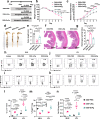
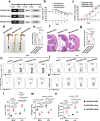
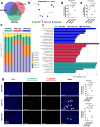
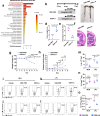
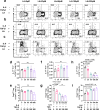
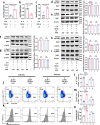
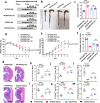
Similar articles
-
Stigmasterol Restores the Balance of Treg/Th17 Cells by Activating the Butyrate-PPARγ Axis in Colitis.Front Immunol. 2021 Oct 6;12:741934. doi: 10.3389/fimmu.2021.741934. eCollection 2021. Front Immunol. 2021. PMID: 34691046 Free PMC article.
-
Adherent-invasive Escherichia coli LF82 aggravated intestinal inflammation in colitis mice by affecting the gut microbiota and Th17/Treg cell differentiation balance.Arch Microbiol. 2023 May 5;205(6):218. doi: 10.1007/s00203-023-03570-4. Arch Microbiol. 2023. PMID: 37145326
-
Subcutaneous vaccination with Porphyromonas gingivalis ameliorates periodontitis by modulating Th17/Treg imbalance in a murine model.Int Immunopharmacol. 2015 Mar;25(1):65-73. doi: 10.1016/j.intimp.2015.01.007. Epub 2015 Jan 18. Int Immunopharmacol. 2015. PMID: 25604387
-
The effect of the "Oral-Gut" axis on periodontitis in inflammatory bowel disease: A review of microbe and immune mechanism associations.Front Cell Infect Microbiol. 2023 Feb 27;13:1132420. doi: 10.3389/fcimb.2023.1132420. eCollection 2023. Front Cell Infect Microbiol. 2023. PMID: 36923589 Free PMC article. Review.
-
The Function and Role of the Th17/Treg Cell Balance in Inflammatory Bowel Disease.J Immunol Res. 2020 Dec 15;2020:8813558. doi: 10.1155/2020/8813558. eCollection 2020. J Immunol Res. 2020. PMID: 33381606 Free PMC article. Review.
Cited by
-
MAD-microbial (origin of) Alzheimer's disease hypothesis: from infection and the antimicrobial response to disruption of key copper-based systems.Front Neurosci. 2024 Oct 2;18:1467333. doi: 10.3389/fnins.2024.1467333. eCollection 2024. Front Neurosci. 2024. PMID: 39416952 Free PMC article. Review.
-
Effect of three oral pathogens on the TMA-TMAO metabolic pathway.Front Cell Infect Microbiol. 2024 May 21;14:1413787. doi: 10.3389/fcimb.2024.1413787. eCollection 2024. Front Cell Infect Microbiol. 2024. PMID: 38836053 Free PMC article.
-
Bifidobacterium longum NSP001-derived extracellular vesicles ameliorate ulcerative colitis by modulating T cell responses in gut microbiota-(in)dependent manners.NPJ Biofilms Microbiomes. 2025 Feb 10;11(1):27. doi: 10.1038/s41522-025-00663-4. NPJ Biofilms Microbiomes. 2025. PMID: 39929833 Free PMC article.
-
Exploring the interconnection between PANoptosis and chronic inflammatory diseases: identifying key targets and therapeutic strategies for periodontitis and ulcerative colitis.Naunyn Schmiedebergs Arch Pharmacol. 2025 Jul 2. doi: 10.1007/s00210-025-04320-7. Online ahead of print. Naunyn Schmiedebergs Arch Pharmacol. 2025. PMID: 40600991
-
Novel insights into immune-gut microbiota interactions in colorectal cancer: a Mendelian randomization study.Infect Agent Cancer. 2025 Apr 18;20(1):27. doi: 10.1186/s13027-025-00653-3. Infect Agent Cancer. 2025. PMID: 40251662 Free PMC article.
References
MeSH terms
Substances
Grants and funding
- 81991504/National Natural Science Foundation of China (National Science Foundation of China)
- 81974149/National Natural Science Foundation of China (National Science Foundation of China)
- 82101009/National Natural Science Foundation of China (National Science Foundation of China)
- 82122015/National Natural Science Foundation of China (National Science Foundation of China)
- ZYLX202121/Beijing Municipal Administration of Hospitals Clinical Medicine Development of Special Funding Support
LinkOut - more resources
Full Text Sources
Molecular Biology Databases
Research Materials
Miscellaneous

